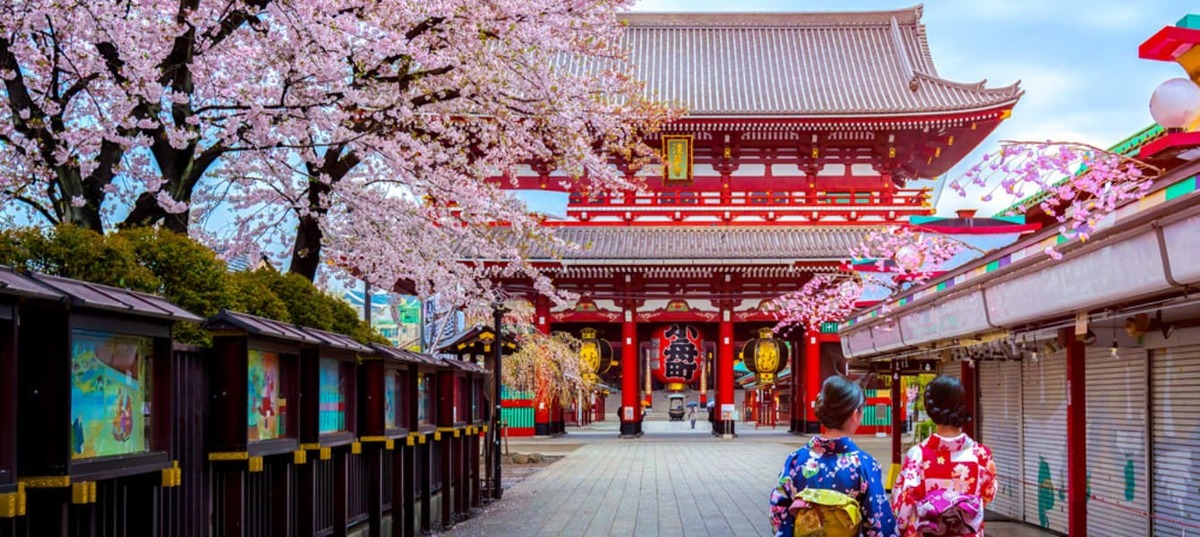Discover the Magic of Senso-ji Temple in the Heart of Tokyo
Introduction to Senso-ji Temple
Nestled in the vibrant district of Asakusa, Tokyo, Senso-ji Temple is not only the oldest temple in the city but also one of the most significant cultural landmarks in all of Japan. Known for its rich history, stunning architecture, and lively surroundings, Senso-ji attracts millions of visitors every year. Whether you are a spiritual seeker, a history buff, or a curious traveler, visiting Senso-ji Temple offers a deeply immersive experience into the heart of Japanese tradition and modern vibrancy. In this comprehensive travel guide, you will discover everything you need to know about Senso-ji Temple, from its historical roots to tips for making the most out of your visit.

History of Senso-ji Temple
Senso-ji Temple, also known as Asakusa Kannon Temple, was founded in the year 645 AD, making it Tokyo's oldest Buddhist temple. According to legend, the temple was built to honor Kannon, the Goddess of Mercy, after two fishermen discovered a statue of her in the nearby Sumida River. Despite their attempts to return the statue to the river, it kept returning to them, a sign interpreted as divine intervention. As a result, the village chief built a temple to enshrine the sacred statue.
Over the centuries, Senso-ji has played a significant role in Japanese religious and cultural life. The temple has withstood earthquakes, fires, and even the devastation of World War II. After the war, it was rebuilt as a symbol of peace and rebirth, reinforcing its importance in the hearts of Japanese people.
Architectural Highlights of Senso-ji Temple
Kaminarimon (Thunder Gate): The outer gate of Senso-ji Temple is perhaps the most iconic. With its massive red lantern and statues of the gods Raijin (god of thunder) and Fujin (god of wind), Kaminarimon is a must-see photo spot.
Nakamise Shopping Street: Leading from the Kaminarimon to the second gate, Hozomon, this bustling street is lined with traditional stalls selling souvenirs, snacks, and handicrafts. It's the perfect place to experience traditional Japanese shopping.
Hozomon Gate: This inner gate houses two massive statues of Nio guardians and a pair of giant waraji (straw sandals). It leads directly into the temple grounds.
Main Hall (Hondo): The temple's main hall is where the statue of Kannon is enshrined. Visitors can offer prayers, light incense, and admire the detailed artwork.
Five-story Pagoda: To the left of the main hall stands a beautiful five-story pagoda, symbolizing the connection between heaven and earth.
Spiritual and Cultural Significance
Senso-ji is a functioning Buddhist temple that serves as a place of worship for locals and pilgrims alike. It’s common to see worshippers engaging in various rituals:
Omikuji (Fortune Slips): Visitors can draw fortune slips from designated boxes. If you receive a bad fortune, it's customary to tie it onto a nearby rack to leave the misfortune behind.
Incense Offering: Lighting incense at the large cauldron in front of the main hall is believed to purify the soul and bring good health.
Prayers and Offerings: Many people visit the temple to pray for health, success, and happiness.
Festivals and Events at Senso-ji Temple
Sanja Matsuri (May): One of Tokyo’s largest and most lively festivals, Sanja Matsuri celebrates the founding of Senso-ji. The festival features parades, portable shrines (mikoshi), and traditional performances.
New Year (January): The temple is a popular destination for hatsumode (first shrine visit of the year). Thousands gather to pray for good fortune in the coming year.
Hozuki-Ichi (July): Also known as the Ground Cherry Market, this event is held in the temple grounds and features over 100 vendors selling hozuki plants and traditional crafts.
How to Get to Senso-ji Temple
Senso-ji Temple is easily accessible via public transportation:
By Train: Take the Tokyo Metro Ginza Line or the Tobu Skytree Line to Asakusa Station. The temple is a short 5-minute walk from the station.
By Bus: Numerous local buses stop near Asakusa, making it convenient for travelers exploring different parts of Tokyo.
Best Time to Visit Senso-ji Temple
While Senso-ji is open year-round, certain times offer a more picturesque or peaceful experience:
Spring (March to May): Cherry blossoms bloom, making the temple grounds incredibly scenic.
Autumn (October to November): The fall foliage provides a beautiful backdrop for photography.
Early Morning or Late Evening: For those who prefer a quieter experience, visiting early or late in the day helps avoid large crowds.
Tips for Visiting Senso-ji Temple
Respect Temple Etiquette: Be mindful of your behavior. Refrain from speaking loudly, and follow signs regarding photography and prohibited areas.
Dress Appropriately: While there’s no strict dress code, modest attire is appreciated out of respect for the religious site.
Explore the Area: Don’t limit your visit to just the temple. Nearby attractions include Sumida Park, the Asakusa Culture and Tourist Information Center, and river cruises along the Sumida River.
Try Local Delicacies: Sample traditional snacks like ningyo-yaki (little cakes filled with red bean paste) and age-manju (fried sweet buns).
Nearby Attractions
Tokyo Skytree: A short train ride away, this modern marvel offers breathtaking panoramic views of Tokyo.
Asakusa Culture and Tourist Information Center: For a deeper understanding of the area's history and culture.
Sumida River Cruises: Enjoy a leisurely boat ride and see Tokyo from a unique perspective.
Conclusion: A Must-Visit Destination in Tokyo
Senso-ji Temple is more than just a historic site; it’s a living, breathing symbol of Japanese spirituality, resilience, and cultural pride. From its awe-inspiring gates to its bustling shopping street and tranquil prayer halls, the temple offers something for everyone. Whether you're seeking spiritual solace, cultural insights, or simply an unforgettable travel experience, Senso-ji Temple delivers it all in abundance.
When planning your trip to Tokyo, make sure to include Senso-ji Temple in your itinerary. It promises not only a glimpse into Japan’s storied past but also a vibrant experience that will stay with you long after you've returned home.
